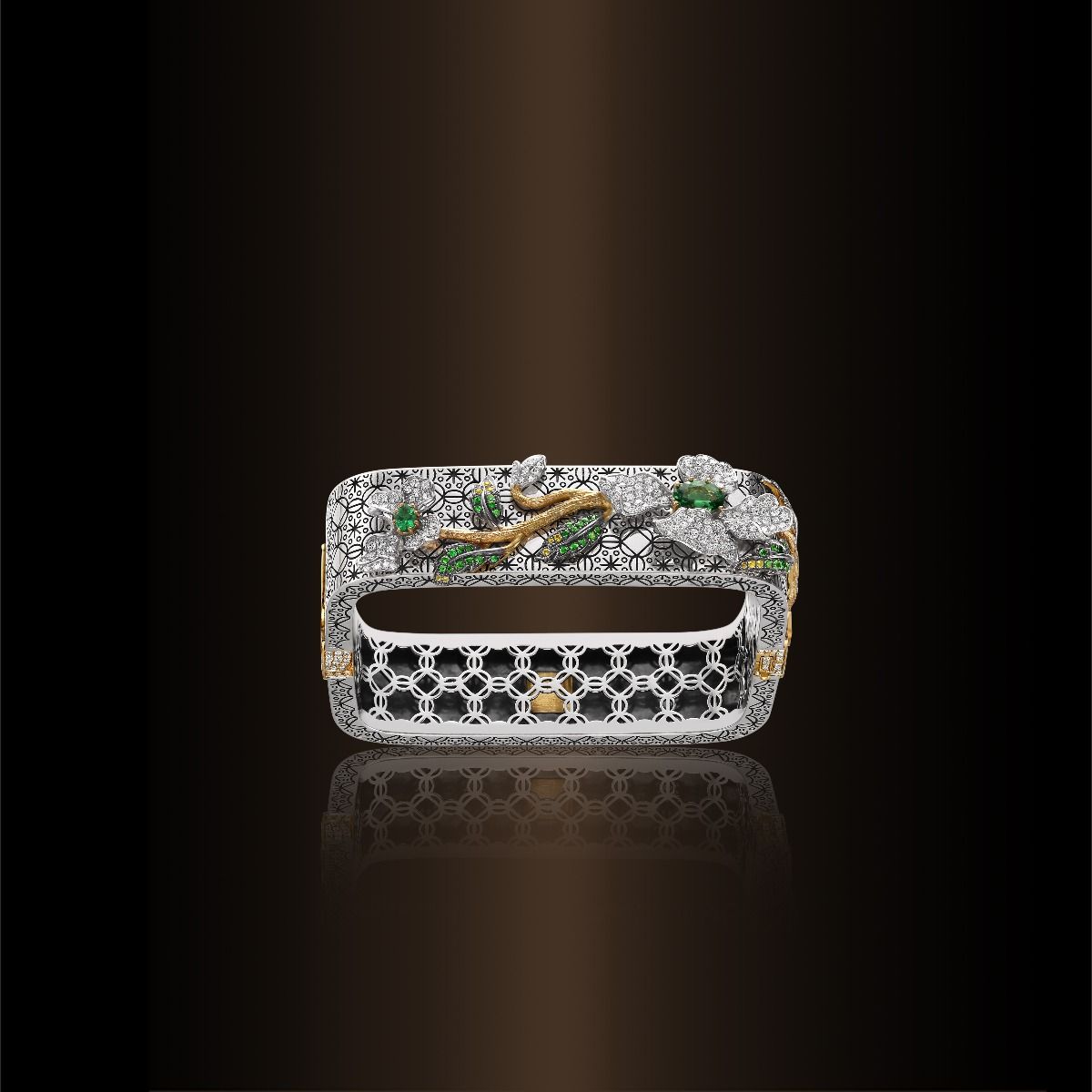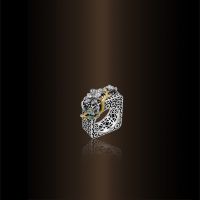FLORAL BROCADE

YEWN pays tribute to the beautiful Jinwen 錦紋 patterns used in Qing Dynasty 清朝 imperial porcelain, lacquerware and many other works of art. Qing Emperors embraced the dominating Han 漢 culture heritage and brought the Han Chinese aesthetic sophistication into a new height. By incorporating the sacred and auspicious flowers on top of the brocade pattern, the collection reinterprets the poetic past with YEWN’s world renowned, iconic square ring with superlative craftsmanship.
Emperor Qianlong 乾隆 (reigned 1736-1795) admired the carved lacquer works of art of the Ming dynasty 明朝 and with the help of Tang Ying 唐英, the superintendent of the Jingdezhen 景德鎮 Imperial kilns he ordered the devel- opment of the “flower-on-brocade” method on porcelain which imitated many lacquerware designs whereby flowers were painted in relief using enamel. The method required the skilled dexterity of the artisans to carve complex patterns which were similar to those techniques used to produce carved lacquerware, but here the difference was that the incisions were made on low-fired enamel glazes on porcelain. It was an artistic breakthrough as it created three dimen- sional enamel decoration on the porcelain’s surface. Interestingly the complex backgrounds on the ‘flower-on-brocade’ enamelled porcelain all seem to have come from the earlier incised lace work designs to be seen on carved lacquer- ware of the Ming dynasty 明朝 (368-1644), so admired by Emperor Qianlong 乾隆.
Ying had previously been involved in the making of Yixing 宜興 ware which had the aspect of imitation lacquer on porcelain at the Imperial kilns and it was only natural that he would use his past experience and interest to help encourage the new ‘flower-on-brocade’ technique to please the new Emperor, Qianlong. It was one of the first technical advances of the early Qianlong years. Named ‘jin shang tian hua 錦上添花’ which was a reference to a poem written by the calligrapher Huang Tingjian 黃庭堅 in the Song dynasty 宋朝, it liter- ally means ‘adding flower on brocade’, or as we might say in English, it was ‘the icing on the cake’.

